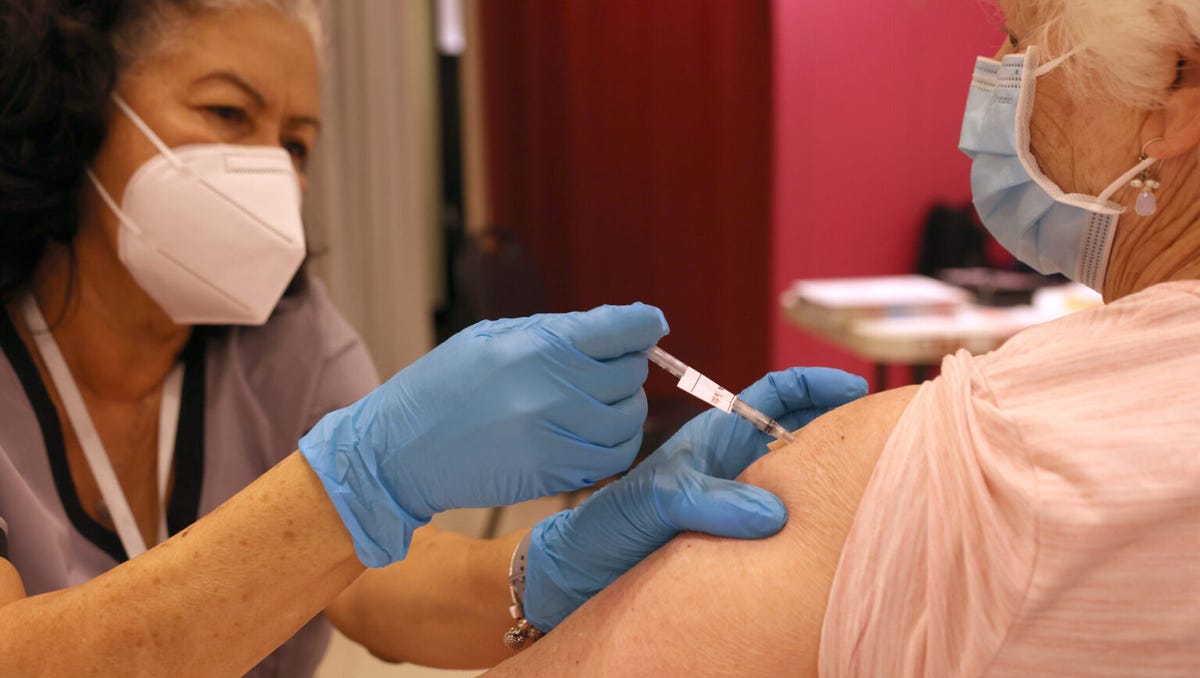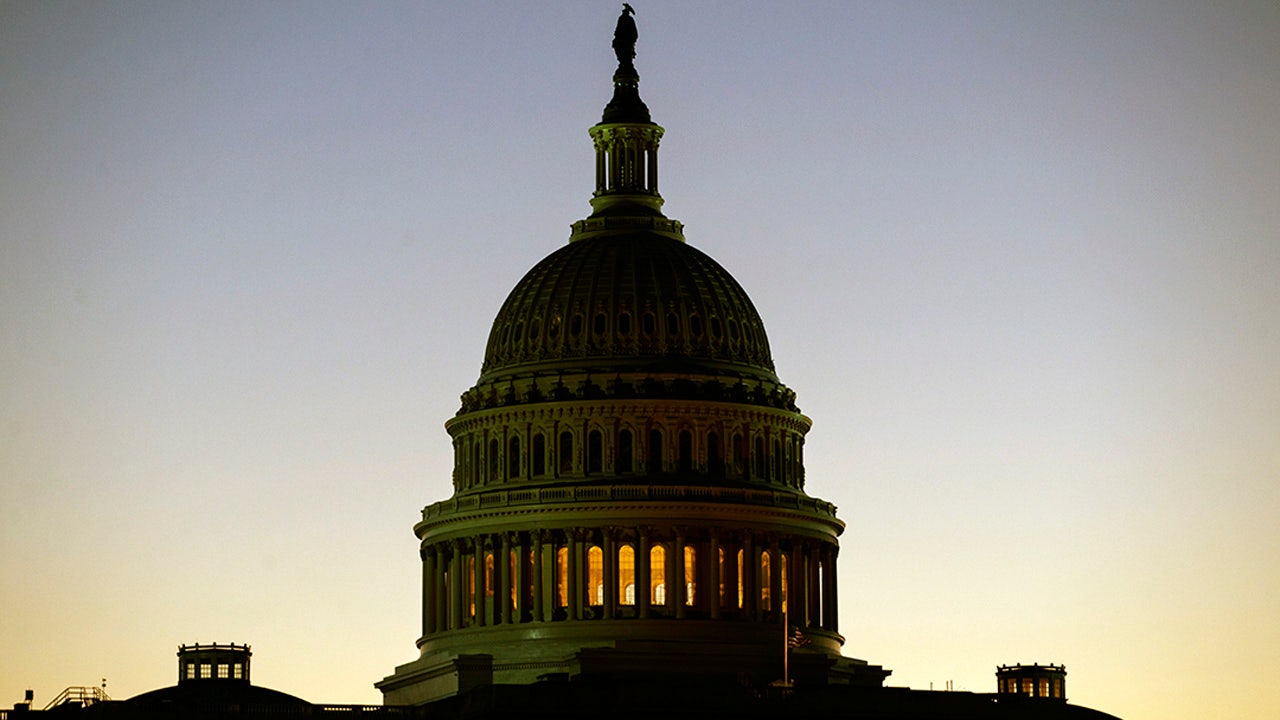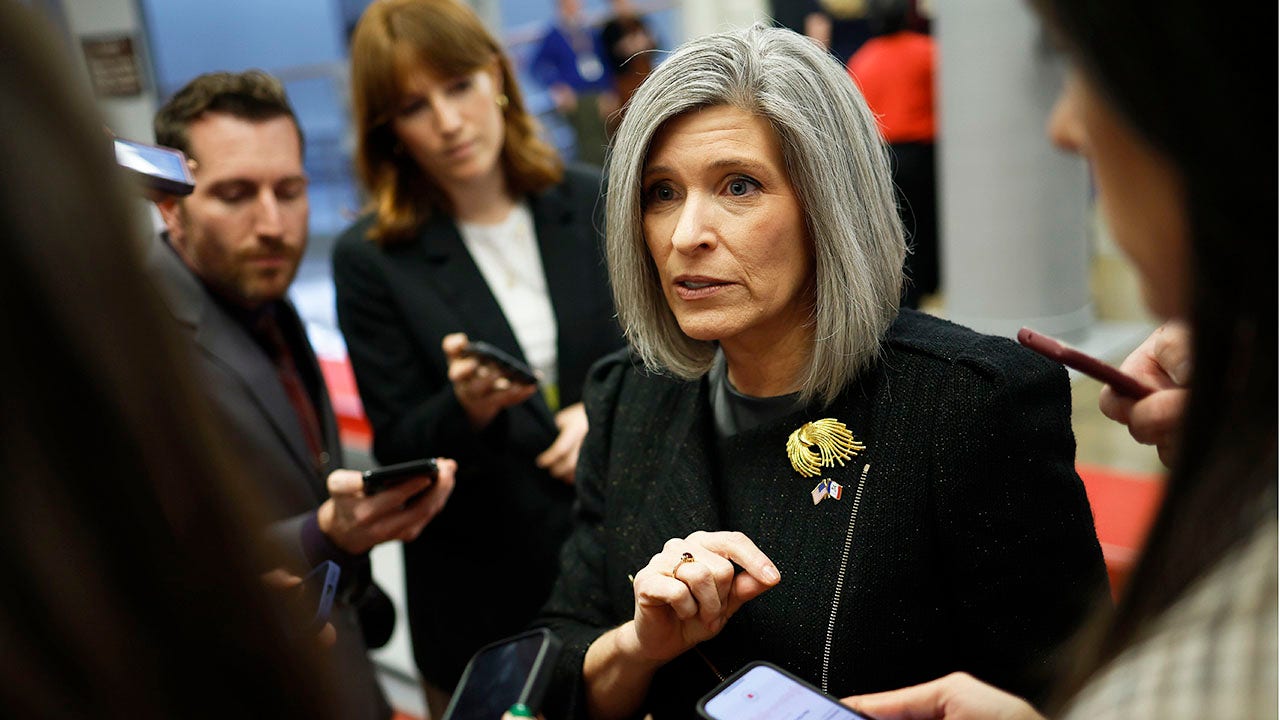Florida
What’s new in Florida Department of Health COVID reports after the lawsuit? What’s missing?

FDA approves updated vaccine to fight COVID variants as cases rise
An updated COVID vaccine has been approved by the FDA, paving the way for a fight against variants as cases rise across the country.
Ryan Ross, USA TODAY
In October, the Florida Department of Health (FDOH) agreed to settle a nearly two-year-old lawsuit over COVID-19 data by releasing more detailed information spanning back three years on the state’s FLHealthCHARTS.gov site.
At about the same time, the state stopped issuing its biweekly COVID reports.
After years of slow-walking or refusing public records requests for specific COVID data and changing the way it counts cases, this is another big change for the state’s reporting. What information has been added? Is anything missing? Here’s a look at the new data.
What has been added to Florida’s COVID-19 reporting?
The COVID data in CHARTS now allows you to see data for cases, surveilled COVID-related deaths, and general vaccination status from the beginning of the pandemic in March 2020 to the latest current numbers, visible by year, month or week. The data is broken down by county, with a state total at the bottom, and can be filtered for data by race, ethnicity and sex.
This can make researching trends for specific groups of people easier, just pick your filters and time intervals.
The COVID CHARTS also allows researchers to see how many people died of COVID-related conditions by county, something that has been missing from state reports since June 2021.
Previous reports only went back a year, so this is a lot of information that’s been made available to the general public. All data also is available to download in spreadsheets.
What is missing from the new Florida COVID data?
Convenience and context. While there is more data available, some information that has been included or curated on the state’s biweekly reports (still visible here) is no longer provided or is provided in a different format. That includes:
- Cumulative totals: You can find interval totals (year, month, week) for the state at the bottom of the chart, but there are no longer cumulative totals provided if you want to know, for example, how many people have died from COVID in Florida (92,292) or how many cases were logged in Sarasota County (126,763) since the pandemic started, numbers that were previously included in the biweekly reports. That information is there, you’ll just have to do the math yourself.
- Percentages: Same here. Easy-to-understand percentages of rising or falling cases, deaths and positivity are no longer provided for you.
- New case positivity: This is completely gone. Once a measure of the percentage of people testing positive for the first time out of everyone tested, it was a handy gauge of how quickly and intensely the virus was spreading. It’s less useful now that most people are testing at home and not reporting the results to the state.
- Data on booster doses: The biweekly reports included data on first doses, completed vaccination series, and booster doses. The CHARTS data shows only “Persons Vaccinated for COVID-19.” There is no indication of the percentage of Florida’s population that has been vaccinated, how many people have had boosters, or how many have received the most recent one.
- Charts: Again, the data is there. But the easy-to-understand charts which allowed average readers to see at a glance the increase or decrease in cases, positivity rates and doses administered are no longer provided.
- Overviews: Also no longer provided: curated overviews by county and demographics showing cumulative and previous week’s cases and vaccination numbers compared to the cumulative total and the total population, or recent and cumulative mortality rates compared to the population.
The result seems to be more data available but in a format less convenient for the average reader to easily and quickly comprehend, with much of the context removed.
Where can I find data on Florida COVID cases, deaths and vaccinations?
You can find a link to the CHARTS COVID dashboard on the state’s COVID page at floridahealthcovid19.gov or go directly to it here.
From the FDOH site at floridahealth.gov, click on Statistics & Data in the menu and then on the CHARTS logo on the right, or search for “COVID.” It’s also linked off the Respiratory Illness and COVID pages.

Florida
Jesuit’s Will Griffin becomes 10th Florida high school QB to throw for 10K yards

TAMPA – Jesuit High School senior quarterback Will Griffin always idolized Florida Gator football legend Tim Tebow.
“I look up to him,” Griffin said.
However, it’s Tebow that is now looking up at Griffin, at least when it comes to the high school football record books.
What they’re saying:
“He’s definitely the once in a career type of player,” Jesuit head coach Matt Thompson said. “You don’t really get it that much. Not as a quarterback. I have not had a quarterback be as special as Will.”

In the first game of the 2025 season, Griffin surpassed the 10,000 passing yards career milestone. He is just the 10th player in high school football history in the sunshine state to ever join that club, according to MaxPreps. Tebow finished his career at Nease High School with 9,765 passing yards.
“10,000 was amazing,” Griffin said. “It is really hard to do that. I’ve got to remind myself that I go out here and play for the team. I am not playing for myself or the stats that follows. If you can have a good team around you and a great defense to get you the ball, a great offense that can score, the stats will naturally come.”
The backstory:
It certainly helps he was able to play varsity football as a seventh and eighth grader under Tampa Bay Buccaneers legend Mike Alstott at Northside Christian. Griffin makes it clear; however, he does not deserve all of the credit for hitting this mark.
“I wouldn’t be here if it wasn’t for the offensive line,” Griffin said. “If it wasn’t for the receivers catching my passes. If it wasn’t for the running backs running touchdowns to open up the pass. A lot of things go into it.”
READ: State Basketball Championships moving to Jacksonville after decades in Lakeland
A lot of things go into his success, but Jesuit head football coach Matt Thompson says Griffin has a lot of the traits to be successful.

“He has all of the measurables,” Thompson said. “[He has] the size, the speed, the strength and the arm strength as a quarterback. His football IQ is outstanding. He understands the game. He understands the offense. He understands the defense. He’s a total package.”
The University of Florida was impressed with those abilities and offered him a scholarship. For the kid who grew up watching the Gators on fall Saturdays, it’s a dream come true.
Going to Gainesville
“It’s just home,” Griffin said. “It felt like the right place for me to be. Very excited. I want to get there. I want to help out. I want to contribute. I want to play really badly.”
However, at this moment, Griffin just wants to soak in his last few months as a high school football player.

“I am trying to enjoy it as much as I can because I know it’s going to end soon,” Griffin said. “I want to make sure I take in every moment.”
That’s because Griffin wants to be remembered not for his stats but for who he is as a person.
“I want people to remember me more as a leader rather than going to Florida,” Griffin said. “I want it to be more like, ‘He was a leader. He gave everything to the team. He never quit. He never gave up.’”
Griffin will enroll early at Florida. He was the first commit for Billy Napier in the 2026 recruiting class.
The Source: The information in this story was gathered by FOX 13’s Mark Skol, Jr.
Florida
Thousands of Northeast Florida students, community members pour out support for Charlie Kirk at vigil

ST. JOHNS COUNTY, Fla. – Students and community members from across Northeast Florida gathered Sunday evening at Veterans Park to honor conservative activist Charlie Kirk, who was killed last week while speaking at Utah Valley University.
The vigil that brought out thousands was organized by student-led chapters of Turning Point USA, including groups from the University of North Florida, Jacksonville University, Creekside High School and St. Augustine High School.
VIDEO | ‘He sparked a movement’: News4JAX political analyst discusses political impact of Kirk assassination
Kirk, who co-founded Turning Point, was known for his rallies, debates and outspoken presence on college campuses across the country.
“Somebody that inspired me, somebody who made me want to voice my own opinion and how I feel about things going around in the world and my beliefs,” Abigail Venuto said.
Gov. DeSantis condemns ‘increasing levels of political violence’ after Charlie Kirk shot at campus event in Utah
Students who talked with News4JAX said the event honored Kirk’s legacy.
“We honored his movement,” Jaden Duffey said.
Mourners lit candles and left flowers and handwritten messages at the vigil.
Duffey, former president of Creekside High School’s Turning Point USA chapter, urged unity.
“We’re in the midst of a political escalation,” he said. “Everybody needs to de-escalate and we’re not alone. We’re unified as Americans and that’s the most important thing.”
Duffey said during his time with Creekside chapter he had the chance to meet Kirk several times over breakfast.
“Someone who has accumulated millions of followers it was just stunning,” Duffey said. “Then you realize that he’s a very humble person inside.”
Duffey said he was in disbelief when he first heard the news of Kirk’s death. He said there were lots of calls and conversation leading up to Sunday’s vigil.
The St. Johns County Sheriff’s Office acknowledged the vigil in a social media post earlier in the day, saying deputies would have a “large law enforcement presence” at the park and surrounding area as a precaution.
“We’ve got to calm down,” Duffey said. “We have to bring back the American way – the first amendment right, allowing people to just disagree with one another no matter how passionate it is but violence is never the option.”
Copyright 2025 by WJXT News4JAX – All rights reserved.
Florida
Where to watch South Florida-Miami college football game today free livestream

The No. 18 South Florida Bulls play against the No. 5 Miami Hurricanes in a college football game today. The matchup is scheduled to begin at 3:30 p.m. CT on The CW Network. Fans can watch this game for free online by using the free trial offered by DirecTV.
The Bulls enter this matchup with a 2-0 record, and they have already defeated two ranked opponents this season. In their most recent game, the Bulls defeated Florida 18-16.
During the victory, Byrum Brown led the South Florida offense. He completed 23-36 passes for 263 yards and a touchdown, so he will look to perform similarly this afternoon.
Notably, Brown led the team in rushing with 66 yards on the ground.
The Hurricanes also enter this matchup with a 2-0 record, and they are coming off a 45-3 win against Bethune-Cookman.
During the victory, Carson Beck led the Miami offense. He completed 22-24 passes for 267 yards and two touchdowns, which highlights his arm talent.
Beck has thrown for four touchdowns and nearly 500 yards this season, so he will try to continue his offensive success today.
Fans can watch this college football game for free online by using the free trial offered by DirecTV.
If you purchase a product or register for an account through a link on our site, we may receive compensation. By using this site, you consent to our User Agreement and agree that your clicks, interactions, and personal information may be collected, recorded, and/or stored by us and social media and other third-party partners in accordance with our Privacy Policy.
-

 World1 week ago
World1 week agoTrump and Zelenskyy to meet as Poland pressures NATO on no fly zone over Ukraine
-

 Technology1 week ago
Technology1 week agoNew Evite phishing scam uses emotional event invitations to target victims
-

 Health1 week ago
Health1 week agoDiabetes risk quadruples with use of popular natural remedy, study finds
-

 Politics1 week ago
Politics1 week agoHouse plans Thursday vote on government funding bill to extend spending through November
-

 Business1 week ago
Business1 week agoDisney, Universal and Warner Bros. Discovery sue Chinese AI firm as Hollywood's copyright battles spread
-

 Health1 week ago
Health1 week agoWho Makes Vaccine Policy Decisions in RFK Jr.’s Health Department?
-

 Finance3 days ago
Finance3 days agoReimagining Finance: Derek Kudsee on Coda’s AI-Powered Future
-

 Lifestyle1 week ago
Lifestyle1 week agoBobbi Brown doesn’t listen to men in suits about makeup : Wild Card with Rachel Martin
















